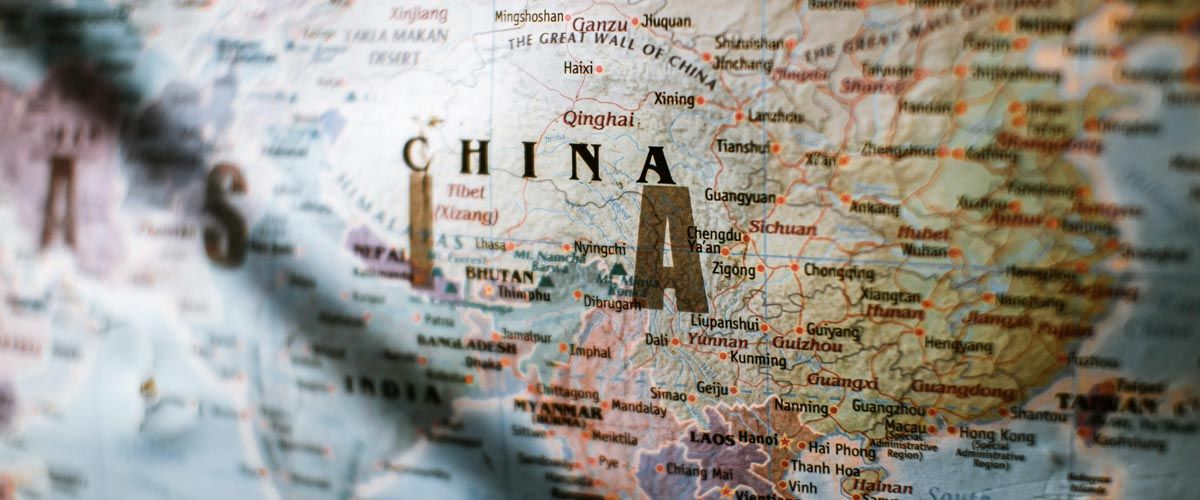contest winners (2024)

Clara Guisado Diana
Universidad Autónoma de Barcelona
The Chinese road of becoming a global power
Abstract
China has been expanding its influence through the global sphere through the last decades. This essay is a summary of some of the reasons behind the growth of this nation and eventual possibility of becoming a great power in dispute with the United States. China is focusing their foreign policy on expanding worldwide, specially through developing countries and participating in the global economy. The central argument is that China is on the road to becoming a great power, but their influence is still not large enough to be considered a global power.
China’s economic and political power has not stopped increasing during the last decades. Nowadays, for the US, China is its number one challenge and the only country capable of reshaping the international order and with the resources to do so (The White House, 2022). In order to understand how China has become a superpower, we must comprehend its own foreign policy and their approach to the international system. China is one of the oldest civilisations in the world. Acknowledged itself as the “Middle Kingdom”, the centre of the world and an influential empire over East Asia. It expanded through the West through the “Silk Road”. China’s splendour continued until the 19th Century, with the loss of the Opium Wars. A wave of humiliation affected the nation, which began to lose territories to other countries and European states got control over certain industries (Historia de China, n.d.). Nevertheless, China has been able to rise again during the last decades and leave the century of humiliation behind.
China’s legitimate interest is based on a series of rights: self-determination when choosing the governmental system, improvement of welfare of its population, participation in international markets, security over the Pacific Ocean and possibility of trade through it, despite control of the area by US allies, and the right to shape the global order. We can define China as a techno-totalitarian region which uses new technologies as a tool. China pursues said interests through their foreign policy, consisting of the non-interference on international affairs, for example, not seeking a governmental change in other states and, apparently, not seeking hegemony. However, during its growth in power during the last decades, it has pursued centrality in the global system and over international institutions. Xi Jinping defines the nation’s foreign policy for China to “lead the reform of the global governance system with the concepts of fairness and justice” (Council on Foreign Relations, 2020). The interest of these policies is to expand China’s ideas worldwide. China has been able to become the largest growing economy since 1980, when the decollectivization of agriculture took place and the country opened to foreign investors and companies (Evolución de La Economía China: Viaje al Pasado Para Entender El Presente, 2018). China nowadays has a diversified economy focused on manufacturing and agriculture and they are trying to translate accumulated wealth into power by defending their borders. An example is the Belt and Road Initiative, which intends to connect Asia, Africa and Europe through land and sea, a “21st century silk road” (European Bank for Reconstruction and Development, 2023). After understanding China’s behaviour, we can see its desire to become a superpower in a global system where “the east is rising and the west is declining” by establishing economic ties with developing countries. However, to become a world leader, it is necessary to shape the international order and nowadays, many countries do not share Chinese values, especially democracies with more economic power and considered US allies. This does not stop China from trying to influence other states through investment. China is entering the realm of global culture, influencing many global events, like the 2008 Olympics. The number of Chinese students in many countries has not stopped increasing. China’s soft power is still growing, but its influence in developing countries is considerable (Nye, 2023). Because of China’s growth, the US now sees a new threat. They were the global power after the end of the Cold War, but China’s rise meant a new division into two blocks with two major powers. It is the major manufacturer and exporter in many places, including US allies like the European Union and Japan. Moreover, China is one of the only two nations with a nuclear arsenal which is considered an existential threat. We may see a new Cold War through the presence of MAD (Mutually Assured Destruction) or their presence in other states. (Is the US-China Relationship the Most Consequential Relationship for America in the World?, n.d.). According to structural realism, the number of poles in the power structure can define the behaviour and the international order. Bipolarity is the actual model: the structure is driving the two poles towards an intensive rivalry and the division in two blocks. It is a similar development than during the Cold War (Bekkevold, 2023).
Hence, the situation may seem as if China is nowadays a superpower but, despite being a pole, it is not enough to be one because they must have global influence (Bekkevold, 2023). The actual Chinese foreign policy is focused on becoming a great power by being more and more present in many regions worldwide, and participating in the global economy. China is growing and adapting and if it continues to do so and provide for developing countries, this policy would allow them to become a superpower.
References
Bekkevold, J. I. (2023). Why China Is Not a Superpower. Foreign Policy.
https://www.state.gov/major-non-nato-ally-status/
Council on Foreign Relations. (2020). China’s Approach to Global Governance. Council on Foreign Relations. https://doi.org/10.1162/isec.2010.34.3.158
European Bank for Reconstruction and Development. (2023). Belt and Road Initiative (BRI). Ebrd.com. https://www.nato.int/nato_static/assets/pdf/pdf_publications/20120214_strategic concept-2010-eng.pdf
Evolución de la economía china: viaje al pasado para entender el presente. (2018, March 14). APD España. https://www.apd.es/evolucion-economia-china-viaje-al-pasado-para-entender-el-presente/
HISTORIA DE CHINA. (n.d.). http://www.economia.unam.mx/cechimex/chmxExtras/seminarios/CursoChinaEcPolSoc/historiachina.pdf
Is the US-China relationship the most consequential relationship for America in the world? (n.d.). Brookings. https://www.brookings.edu/articles/is-the-us-china-relationship-the-most-consequential-relationship-for-america-in-the-world/
Nye, J. S. (2023). Soft Power and Great-Power Competition. Springer Nature.
The White House. (2022). National Security Strategy (pp. 1–48). The White House. https://www.whitehouse.gov/wp-content/uploads/2022/10/Biden-Harris-Administrations-National-Security-Strategy-10.2022.pdf





